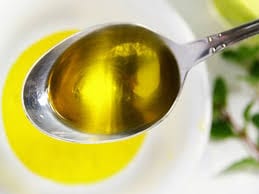When it comes to choosing an oil to bring into your kitchen mix, which one do you go for? The overwhelming options can make it difficult to choose the best oil for the job. How do you store oils? What is the shelf life of oil? To add to the confusion, we hear conflicting reports on which types of fats, if any at all, we should be adding to our diet. It’s almost as if you need a chemistry degree to even go grocery shopping.
Fear not – we have you covered! We have a quick breakdown that will give you oil-purchasing confidence and oil know-how in the kitchen.
 Which oil is the healthiest? Well, it really depends on what you’re going to use it for – cooking or flavor? Each vegetable oil has a different profile of mono- and poly-unsaturated fatty acids (think liquid at room temperature and better for heart health) along with saturated fatty acids (solid at room temperature). All oils have a different fatty acid composition that lends to different heat properties, flavor, and uses. The science nerd in me could lecture on this for hours – but we should keep it short and sweet, right? Click here for a lengthier breakdown of the fatty acid profiles of different oils. You’ll note that canola oil is one of the few plant oil sources of Omega-3s. Those are good fatty acids we need for brain health. A little less mom brain would be nice! 😉
Which oil is the healthiest? Well, it really depends on what you’re going to use it for – cooking or flavor? Each vegetable oil has a different profile of mono- and poly-unsaturated fatty acids (think liquid at room temperature and better for heart health) along with saturated fatty acids (solid at room temperature). All oils have a different fatty acid composition that lends to different heat properties, flavor, and uses. The science nerd in me could lecture on this for hours – but we should keep it short and sweet, right? Click here for a lengthier breakdown of the fatty acid profiles of different oils. You’ll note that canola oil is one of the few plant oil sources of Omega-3s. Those are good fatty acids we need for brain health. A little less mom brain would be nice! 😉
When it comes to choosing a cooking oil that is beneficial to your health, you’re better off to choose one that has less saturated fat and Omega-6 fatty acids. This will help to balance out the Omega-3/Omega-6 ratio. Though the jury is not out on saturated fat, it’s best to consume this type of fat in moderation. Looking at fatty acid composition, safflower, canola, and light olive oil are good oils to keep on hand for cooking. Flaxseed oil, high in Omega-3 fatty acids, is an excellent oil to keep on hand for flavor and creating salad dressings.
Cooking Oils
 When choosing an oil to use in cooking, it’s handy to know the smoke point. This is how hot the oil can get before it starts to smoke (i.e. breakdown and taste burnt). Oils that have higher smoke points are ideal for sautéing and searing, roasting, and stir-frying. Here are a few common oils and their smoke points:
When choosing an oil to use in cooking, it’s handy to know the smoke point. This is how hot the oil can get before it starts to smoke (i.e. breakdown and taste burnt). Oils that have higher smoke points are ideal for sautéing and searing, roasting, and stir-frying. Here are a few common oils and their smoke points:
| Safflower Oil | 510° |
| Light Olive Oil | 465° |
| Soybean Oil | 450° |
| Canola Oil | 400° |
| Sesame Oil | 350° |
| Coconut Oil | 350° |
| Extra Virgin Olive Oil | 325° |
Flavor Oils
It’s probably over simplistic to categorize edible oils into two categories: cooking and flavor. Of course, some oils, like peanut oil, can provide both a satisfactory smoke point and pleasing taste. And, some oils are great for skin and hair care too. To keep this post from being a book – let’s corral the oils into the cooking arena and the flavor arena.
Oils that lend delightful flavors are good to use for dipping bread, topping off hummus, using on fresh greens, or as part of a savory salad dressing.  These oils include extra virgin olive oil, sesame oil, toasted walnut oil, and coconut oil. Fresh artisan bread pairs really well with EVOO (I can’t remember who coined that term…but it’s what the cool kids call extra virgin olive oil) swirled with a heavy balsamic vinegar. Sesame and toasted walnut oils provide big flavor as part of dressings or topping off dishes. And, though my husband would highly disagree, I appreciate the nutty flavor of coconut oil when used in biscuits, desserts, and crackers.
These oils include extra virgin olive oil, sesame oil, toasted walnut oil, and coconut oil. Fresh artisan bread pairs really well with EVOO (I can’t remember who coined that term…but it’s what the cool kids call extra virgin olive oil) swirled with a heavy balsamic vinegar. Sesame and toasted walnut oils provide big flavor as part of dressings or topping off dishes. And, though my husband would highly disagree, I appreciate the nutty flavor of coconut oil when used in biscuits, desserts, and crackers.
Ideally – you’ll have at least two oils on hand in the kitchen: one that offers a higher smoke point for cooking with and one that is tasty for adding flavor.
Storage Tips
Edible oils need to be protected. Though they can pack a mighty punch (Have you ever dumped food into a hot pan of oil and felt the wrath of the sizzle? Ouch!), they are somewhat delicate. Take care to protect them from heat, light, air, and water. This means they need to be stored in a cool dark place. Not in the cabinet above your stove. Not in a pretty glass bottle in striking distance of the bright morning sun peering through your window. And, not without a lid. Heat and light will make oils go rancid quickly. You’ll notice that their odor is a little off and the taste is a little bitter. Some of the more flavorful oils should be refrigerated to prevent rancidity.
The shelf life of oils varies – but a general rule of thumb is to use it within six months. Some oils have a shorter shelf life and some longer. Walk past the gallon of oil at Costco if you aren’t going to use it by the summer. It’s not worth the savings.
Hopefully, you feel a little more confident in your ability to choose and store edible oils. While Popeye was smitten for his Olive Oyl, you don’t need to feel bound to olive oil. It’s a great addition to any kitchen pantry but – there is so much more to choose from! Be adventurous and try a new oil today!


Recent Comments